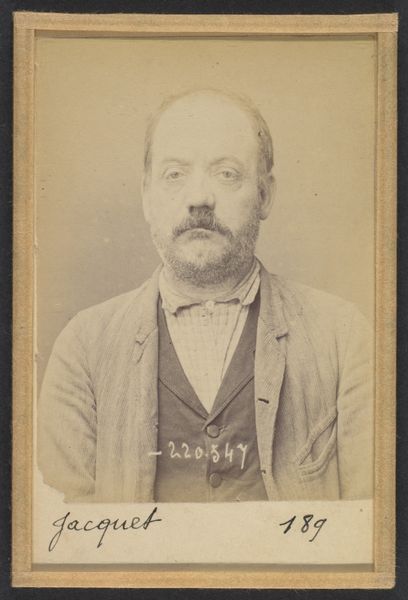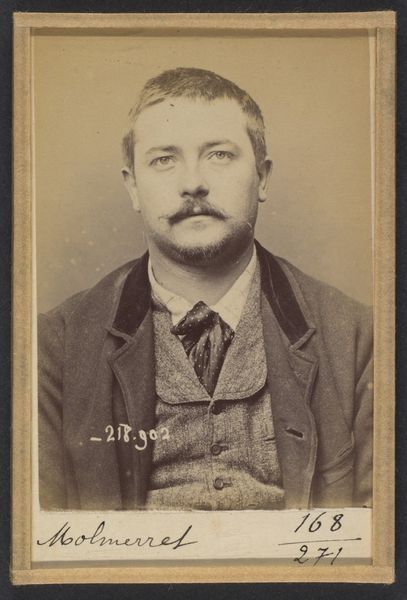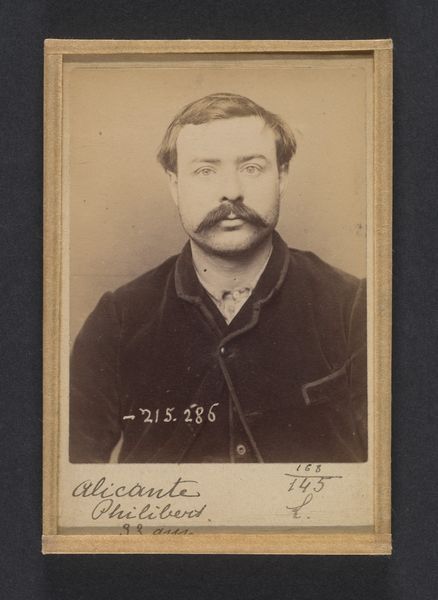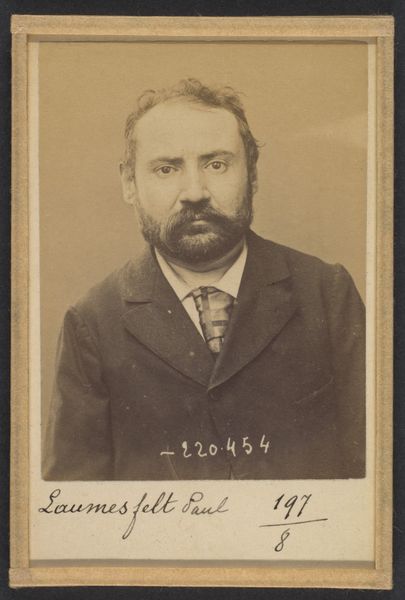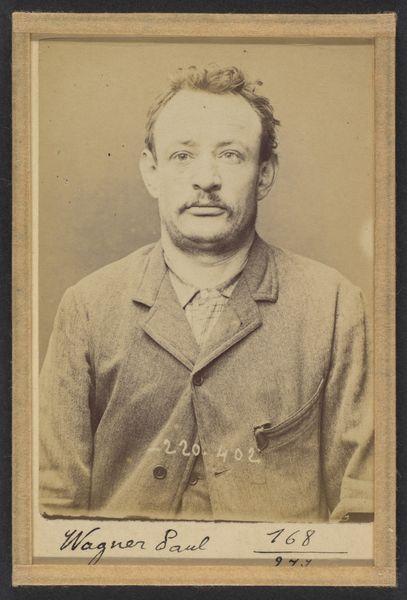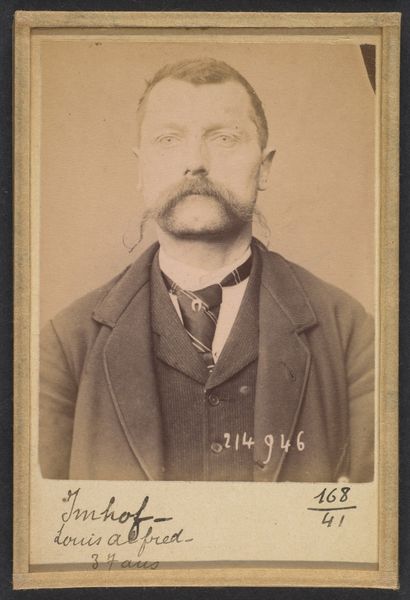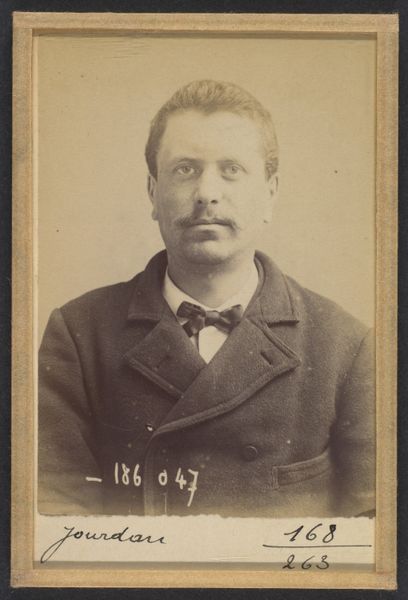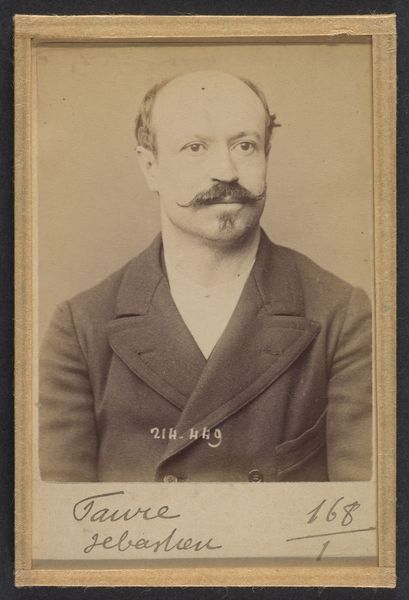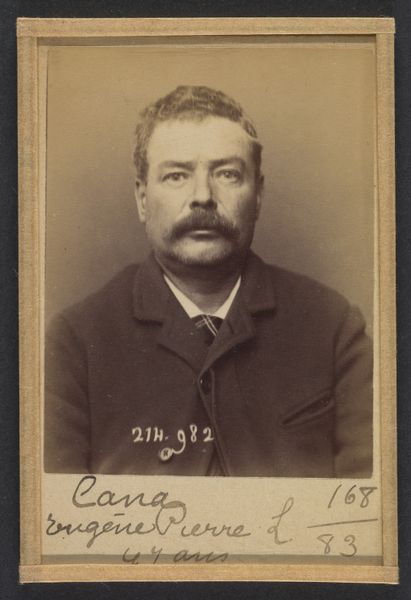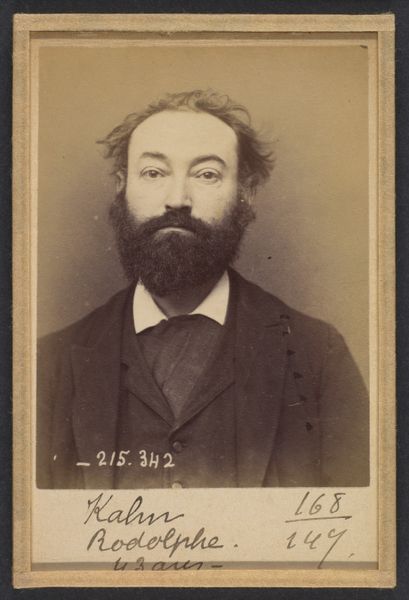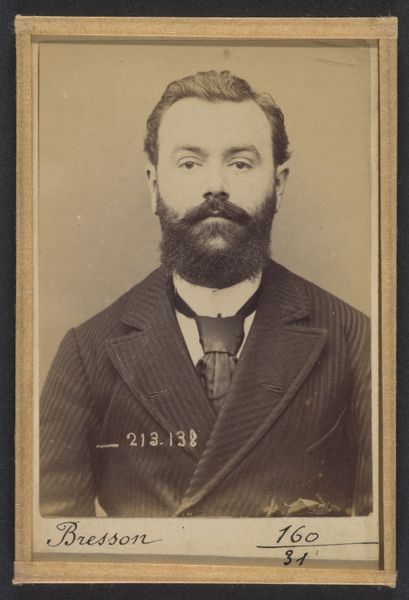
Pausader. Jean, Ernest. 27 ans, né le 28/7/66 à Paris Xe. Publiciste. Anarchiste. 2/1/94. 1894
0:00
0:00
photography, gelatin-silver-print
#
portrait
#
african-art
#
photography
#
gelatin-silver-print
#
realism
Dimensions: 10.5 x 7 x 0.5 cm (4 1/8 x 2 3/4 x 3/16 in.) each
Copyright: Public Domain
Curator: Looking at this arresting photograph, “Pausader. Jean, Ernest. 27 ans…” created in 1894 by Alphonse Bertillon, what immediately strikes you? Editor: The man’s gaze, undeniably. There’s an unsettling mix of defiance and vulnerability, wouldn't you say? His eyes, framed by heavy brows, pull you right in. Curator: The tonal range certainly contributes. Observe the limited, almost monochromatic palette and the meticulous framing. The artist used a gelatin silver print, allowing for precise control over light and shadow, thereby enhancing the subject’s presence. Editor: Light and shadow definitely carve out the mood here. It makes me wonder, what narratives, both personal and political, is this face holding back? Given his self-proclaimed anarchist affiliation, I'd guess it's a complex mix. I mean, the man chose to label himself, so he embraced the archetype. Curator: Absolutely. It's a potent reminder of the period's political tensions. Semiotically, the mustache and the meticulously knotted tie suggest bourgeois aspirations countered by a rejection of established social structures. Editor: Anarchy often contains a soup of symbols; individual liberty wrestling order and constraint, perhaps. It raises the question, how does visual data influence public perceptions of anarchists at the end of the 19th century? This wasn't simply portraiture, was it? Curator: Far from it. Bertillon pioneered forensic photography. His approach, documenting “deviant” elements, reduces the individual to a series of measurable characteristics, thereby asserting control. Editor: Ah, the inherent duality, or the tension within a picture: on the one hand, we have personal expression; on the other, impersonal surveillance. The piece leaves you unsettled. Curator: Precisely. Bertillon's method strips away any romanticized notions. He captures instead what the system aims to neutralize, offering a grim portrait of that era. Editor: I find it compelling how visual clues can hint at underlying turmoil. Ultimately, images like these compel us to reassess cultural symbols. Curator: Agreed. This is where the work transcends a mere depiction of an individual and instead becomes a meditation on identity.
Comments
No comments
Be the first to comment and join the conversation on the ultimate creative platform.
